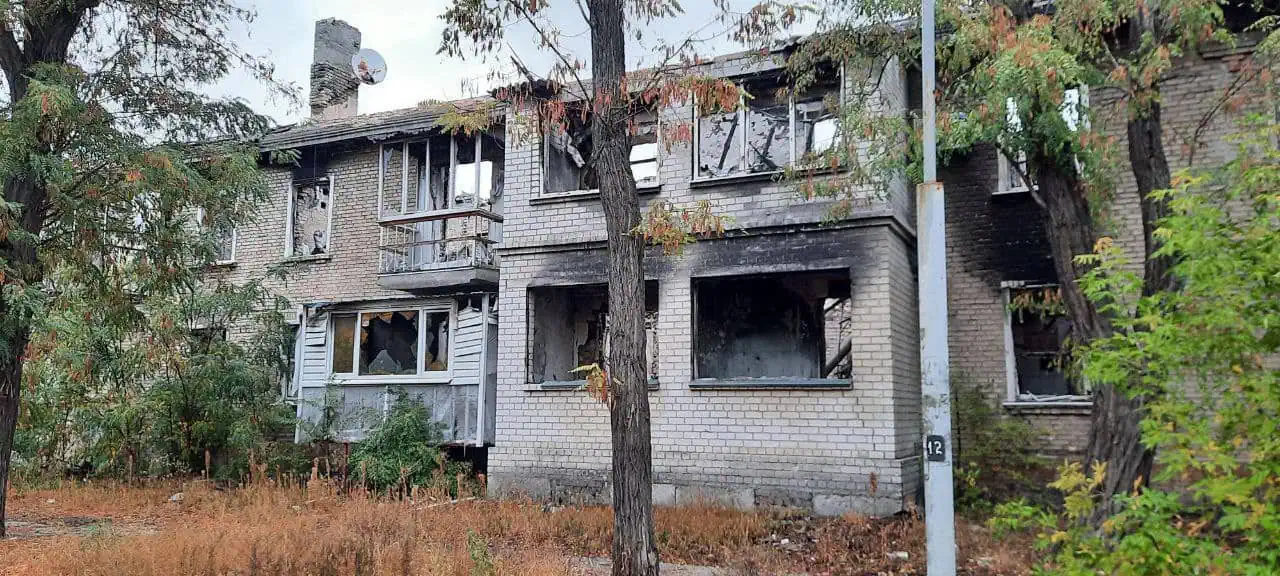

In nine weeks, occupation administrations have published 7,544 addresses of real estate that can be taken away from owners
At least 888 addresses of real estate “with signs of ownerlessness” published occupation administrations in four regions of Ukraine in the fourth week of October 2024, from 21 to 27 October. In the nine weeks since the start of the count, at least 7,544 addresses of property “with signs of ownerlessness” have been published.
The relevant announcements of the occupation municipal and regional administrations state that owners of such property can claim their rights to it by contacting the occupation administrations in person with an identity document, taxpayer identification number and documents certifying the right to the property.
If the owners do not come forward with the documents within 30 days of the announcement, their property will be transferred to “state” or “municipal” ownership.
The text of the announcements makes it clear that property owners must present Russian documents.
As can be seen from the announcements, the property audits are taking place in all Russian-occupied territories except Crimea, including those parts of the Donetsk and Luhansk regions over which Ukraine lost control in 2014-2015. Russia annexed all of these territories in September 2022, but in the parts of the Donetsk and Luhansk regions occupied since 2014-2015, property had been taken away from its rightful owners long before the annexation. Since recently, property owners in all occupied territories have been required to register their property with the Russian State Register.
In the fourth week of October, as in the previous weeks, the occupation administrations in Luhansk “republic” published the most addresses of real estate “with signs of ownerlessness,” but only slightly less in Donetsk as this time, the occupation administration of Mariupol published 311 addresses. The occupation administration of Lysychansk found 20 apartments “with signs of ownerlessness” in one house and of Siverskodonetsk – 15 addresses.
The occupation administration of Mariupol has consistently published the most addresses. The tables it publishes make it clear the extent of the city’s destruction and depopulation. Thus, according to the summary data of the occupation administration of Mariupol, published on 20 September, 497 non-residential premises and 4,213 residential premises “with signs of ownerlessness” were found in the city. Another 1,564 premises, according to the occupation administration, were excluded from the list of ownerless premises, which means that their owners were found and were able to confirm their rights.
On 22 October, the occupation administration of Mariupol published an updated list of non-residential property addresses “with signs of ownerlessness,” with 508 addresses added between 19 February and 21 October.
News media regularly report on the problem to local residents who stayed in the city to get housing in Mariupol as a replacement for destroyed ones. Entire neighbourhoods are demolished and replaced by new residential complexes with apartments for sale and new addresses.
It can be difficult to find lists of real estate “with signs of ownerlessness” or “ownerless” in the occupied parts of the Luhansk and Donetsk regions. Some occupation administrations in these territories publish fresh lists in the news feeds on their “official” websites, while others, even within the same region, publish them in special sections. This week, the occupation administration in Antratsyt, Luhansk region, published for the first time a fresh list of properties “with signs of ownerlessness” with a specific date, and added dates to addresses it had published previously. The lists without a publication date made it absurd to require owners to come forward within 30 days of the publication of their property addresses.
Most of the websites of the occupation administrations in the Donetsk region are virtually impossible to access by users outside Russia, while some of these administrations do not publish the addresses of “property with signs of ownerlessness” on their social media pages.
The occupation administration of the Russian-occupied Lutuhyne municipal district does not inform owners of the possibility of their property being recognised as “ownerless”: no relevant lists can be found on the website or on the administration’s social media pages. Nevertheless, on 4, 8 and 9 October, it published “resolutions” declaring 48 properties “ownerless,” i.e. in the process of being transferred to “municipal” ownership.
Local media report difficulties with the registration or confirmation of ownership of real estate in the occupied territories due to the lack or complete absence of notaries.
In addition, there are reports of an increase in the number of cases of Ukrainian refugees failing to pass the filtering measures in Russia while trying to return from abroad to obtain Russian documents and confirm their ownership of property in the occupied territories. Entry to the occupied territories of Ukraine from outside Russia is possible only after passing a special check at the Russian Sheremetyevo airport by representatives of the Russian special services.
Residents of the occupied territories can obtain a Russian passport under simplified procedure only until the end of 2024. Those locals who are unwilling or unable to do so will have only the rights of foreigners under Russian law in their occupied regions.
Nevertheless, according to the Ukrainian ombudsman Dmytro Lubinets, more and more displaced Ukrainians are returning to the occupied territories. According to Lubinets, this is due to the lack of material assistance from the state, the unpredictability of state policy towards IDPs, and tensions between them and residents of communities where they have been forced to move.